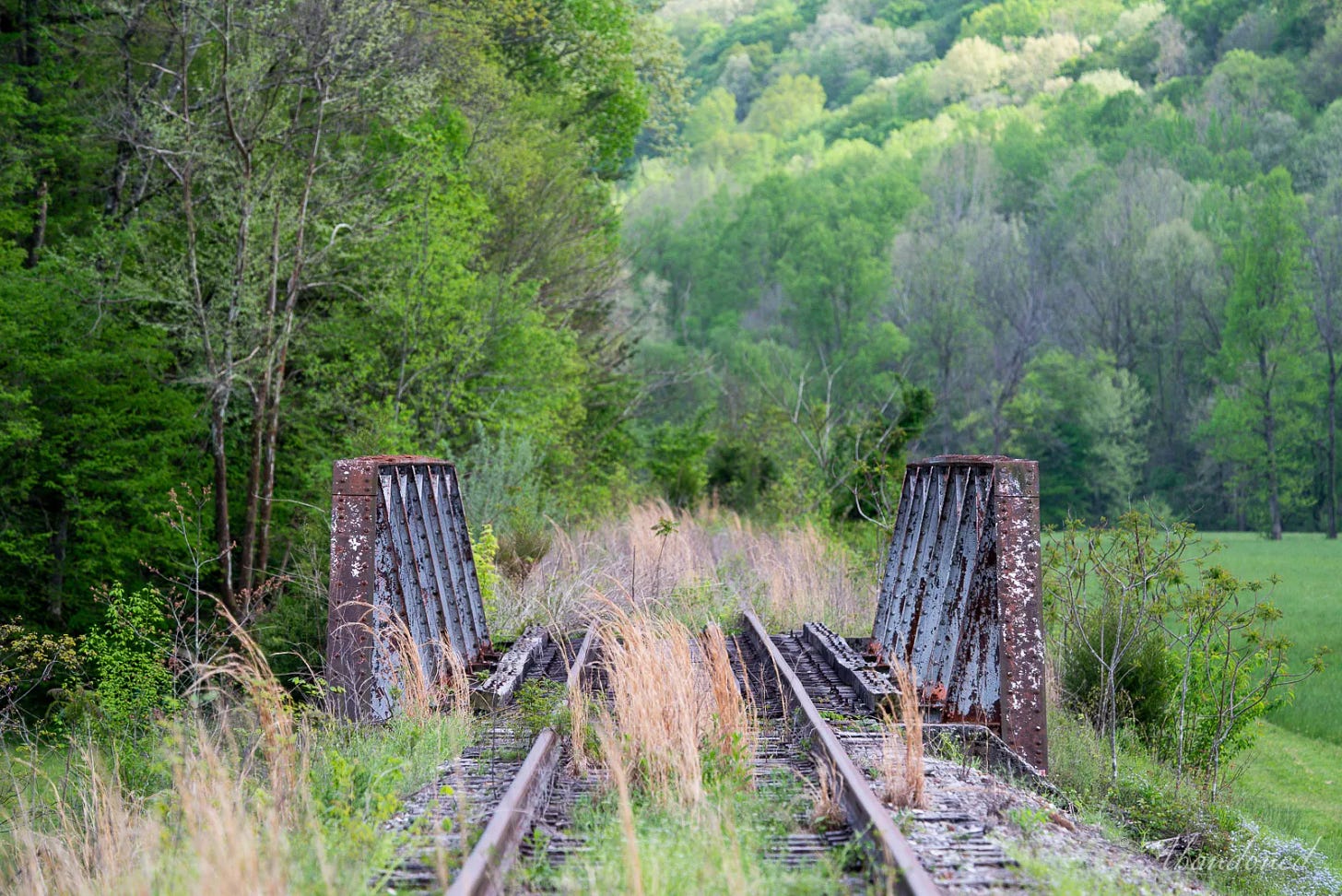A proposal to transform the abandoned Tennessee Railroad into a recreational trail for bicyclists and hikers continues to stir debate, as the story moves from local to regional.
The idea — spearheaded by Oak Ridge-based Tennessee Citizens for Wilderness Planning and championed by a local group based in Oneida — has pitted residents along the rail line against tourism promoters. It’s also split local government entities, with the Town of Oneida in favor of the plan while Scott County and the Town of Huntsville are both on the record in opposition to it.
The controversy was restoked last week when WBIR, a Knoxville affiliate of NBC Television, published a story entitled “Scott County is pursuing a plan to turn an old railroad line into a recreational, multi-use trail.”
WBIR interviewed Oneida Mayor Lori Phillips-Jones and Timber Rock Lodge owner Ralph Trieschmann — among others — for its story.
“There is a recreational component of it where families with young children can get out on these trails and enjoy nature,” Phillips-Jones told the TV station. “The health benefits are a lot because people have greater access to walking paths. There’s also a community aspect to preserve that great, rich history of our ancestors who worked on the railroads and mined coal in these areas.”
But the story’s approach drew the ire of some county officials and residents along the rail line. The headline was misleading; Scott County is not pursuing the rail-trail plan, and County Commission has passed a resolution stating its opposition.
After being contacted by Scott County Mayor Jerried Jeffers and some residents along the old railroad, WBIR ran a second story later in the week, entitled, “Scott County neighbors concerned about safety and policing from possible rail-to-trail transformation project.”
In the latter story, Jeffers reiterated his concern over policing the rail line.
“Best case scenario, you might have five people working the night shift for the entire county for the sheriff’s department,” he said. “What are you gonna do if somebody has an incident on somebody’s property that is 20 miles off the beaten path on some trail, and then how are you going to get there?”
The battle lines aren’t clearly drawn between residents along the railroad corridor and tourism promoters. One of those residents, Mike Keeton, lives in the Tunnel Hill area east of Oneida and previously told the Independent Herald that he prefers a walking and biking trail to a free-for-all ATV trail. He repeated that stance to WBIR in its initial story last week.
“I would love to have my land back, but I know the reality of it, and that’s why I’m with this group because the economic growth that could be is something that this county needs.”
Likewise, not all tourism promoters are on board with the idea.
At the end of the day, local opposition and support may mean little, as the proposal will ultimately be decided by entities outside Scott County. Federal legislation and a 1980s ruling by the U.S. Supreme Court create a vehicle for abandoned railroads to be transformed into recreational trails, with the federal Surface Transportation Board serving as a mediator of sorts. And Tennessee Citizens for Wilderness Planning has been joined in its fight to create the trail by Trust for Public Lands, a national organization with offices in San Francisco, Denver and Washington, D.C. that packs a lot of financial muscle.
The owner of the property is R.J. Corman, the Kentucky-based railroad company that purchased the old Tennessee line from National Coal Corporation in 2009 with a $3 million price tag affixed. The Surface Transportation Board recently approved a one-year extension for efforts to transform the railroad into a recreational trail, and Trust for Public Lands is negotiating with Corman for ownership of the railroad corridor.
Should the April 2026 deadline come and go without a resolution, Corman will essentially be free to do with the rail bed what it wishes. At that point, easements that were granted to the railroad company when the railroad was originally built in the 1890s and early 1900s would revert to the original deedholder — which is believed to involve only small portions of the rail grade. Property parcels owned fee-simple by Corman, which make up the bulk of the 41-mile route from Oneida to Devonia, could be sold in part or in whole by Corman, or donated.
Should it come to that, Jeffers is pushing for Corman to sell the property to adjoining landowners.
“Since they bought the easement from those folks, here’s an opportunity to purchase it back at a decent price, right?” he told WBIR.
Others, however, caution that Corman is unlikely to consider that option.
“The land rights were sold over 100 years ago. It’s not going back to the landowners,” Micah Keeton — Mike Keeton’s daughter — said in a Facebook comment in response to the WBIR story. “We looked for ways to get it back, and there aren’t any there. Please do your due diligence, like we did, in researching that. The other option is that the land is sold to the highest bidder if rails to trails isn’t enacted. If that happens, the uses for that land will be up to the new owners’ discretion, whether it be an ATV trail or a flea market.”


